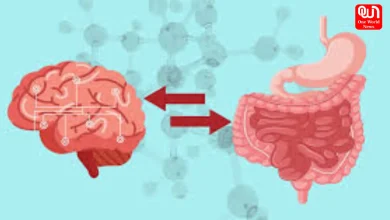What causes Premature vascular damage?
Premature vascular damage can be caused by how we are in our childhood! Studies suggest that lack of physical activity in childhood can be a cause!
How childhood sedentariness accelerates premature vascular damage: Study
Childhood sedentariness, or a lack of physical activity during childhood, has been linked to accelerated premature vascular damage, which can increase the risk of cardiovascular diseases later in life. Several factors contribute to this phenomenon based on scientific studies and medical research:
1. Reduced Endothelial Function: Endothelial cells line the inner surface of blood vessels and play a crucial role in regulating vascular function. Prolonged sedentary behavior during childhood can impair endothelial function, leading to reduced vasodilation (the widening of blood vessels) and increased vasoconstriction (the narrowing of blood vessels). This dysfunction contributes to higher blood pressure and reduced blood flow, which are early signs of vascular damage.
2. Increased Inflammation and Oxidative Stress: Sedentary behavior is associated with higher levels of inflammation and oxidative stress in the body. Inflammation can cause damage to blood vessel walls, promoting the formation of atherosclerotic plaques (fatty deposits) that narrow and stiffen arteries. Oxidative stress further exacerbates this process by generating harmful free radicals that damage cells and tissues within the blood vessels.
3. Impaired Lipid Metabolism: Lack of physical activity in childhood can disrupt lipid metabolism, leading to unfavorable changes in cholesterol levels and triglycerides. Elevated levels of LDL cholesterol (the “bad” cholesterol) and reduced levels of HDL cholesterol (the “good” cholesterol) increase the risk of plaque formation in arteries, which can progress to atherosclerosis and other cardiovascular complications.
4. Insulin Resistance and Metabolic Dysfunction: Sedentariness during childhood is linked to insulin resistance and impaired glucose metabolism. Insulin resistance disrupts the body’s ability to regulate blood sugar levels efficiently, leading to higher circulating glucose and insulin levels. This metabolic dysfunction contributes to systemic inflammation and endothelial dysfunction, accelerating vascular damage over time.
5. Altered Autonomic Nervous System Function: Prolonged sedentary behavior can negatively impact the autonomic nervous system, which regulates heart rate, blood pressure, and vascular tone. Dysregulation of the autonomic nervous system due to childhood sedentariness may contribute to chronic hypertension (high blood pressure) and increased cardiovascular risk later in life.
6. Influence on Body Composition and Adiposity: Sedentary lifestyles during childhood often lead to increased body fat accumulation and obesity. Excess adiposity, particularly visceral fat around internal organs, contributes to systemic inflammation, insulin resistance, and dyslipidemia—all of which promote vascular damage and cardiovascular disease development.
Preventive Measures and Interventions: To mitigate the adverse effects of childhood sedentariness on vascular health, it’s crucial to promote regular physical activity and healthy lifestyle habits from an early age. Encouraging children to engage in daily moderate-to-vigorous physical activity, such as sports, outdoor play, and structured exercise programs, can help improve cardiovascular fitness, maintain healthy body weight, and support optimal vascular function.
Furthermore, educational initiatives targeting parents, caregivers, and schools are essential to raise awareness about the importance of reducing sedentary behaviors and promoting active living among children. By addressing childhood sedentariness through comprehensive lifestyle interventions, we can mitigate premature vascular damage and reduce the burden of cardiovascular diseases later in life.
Register at One World News to never miss out on videos, celeb interviews, and best reads.








